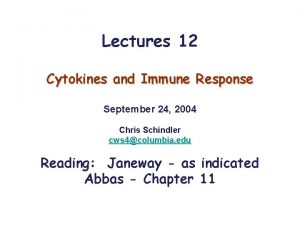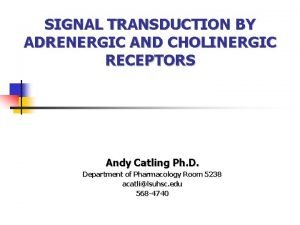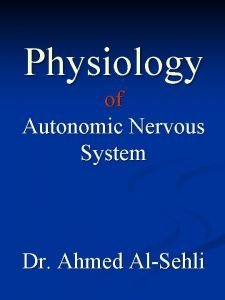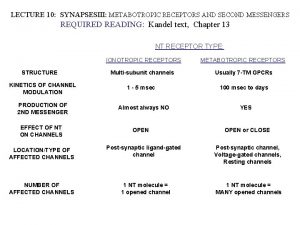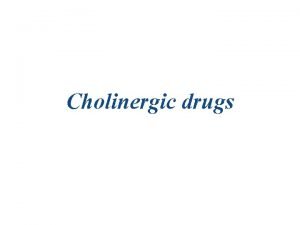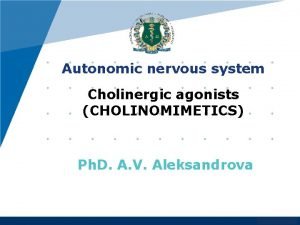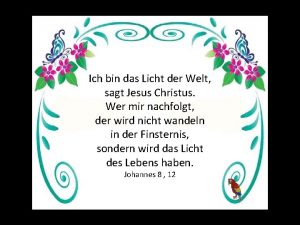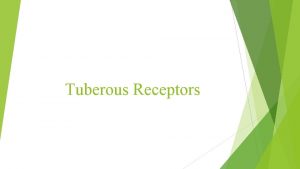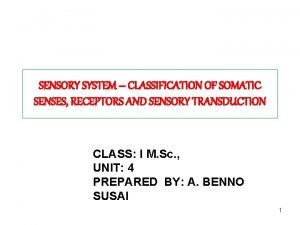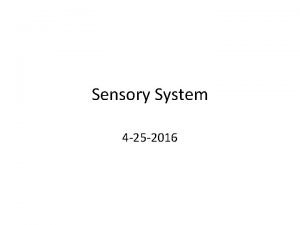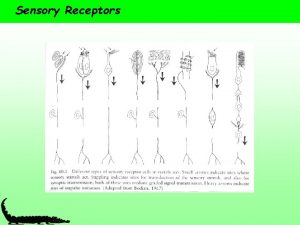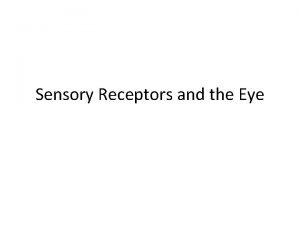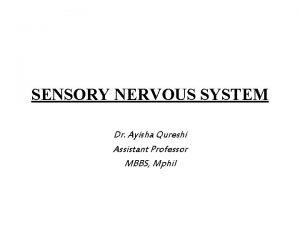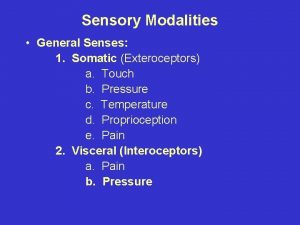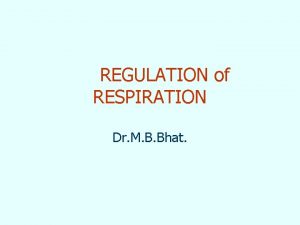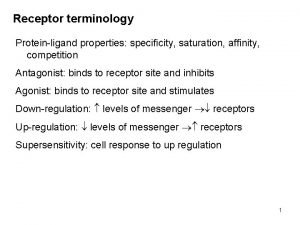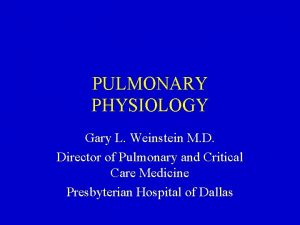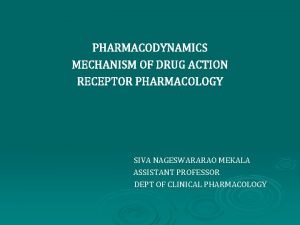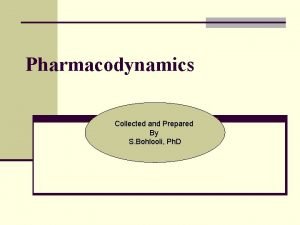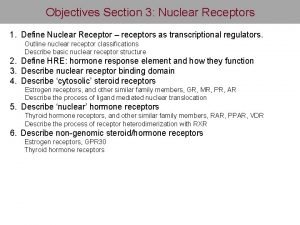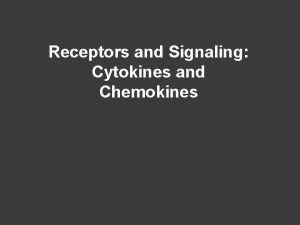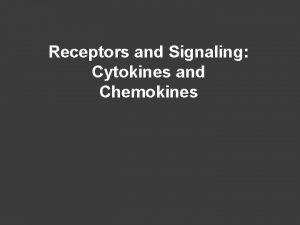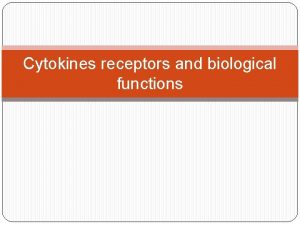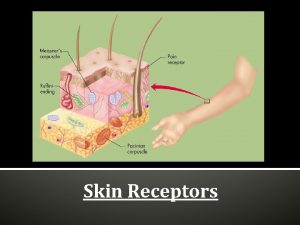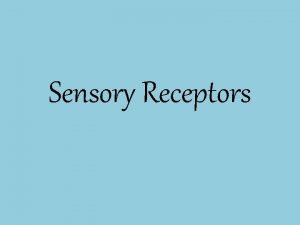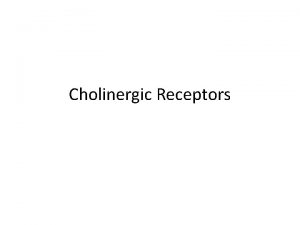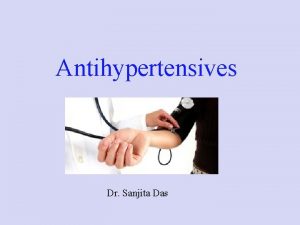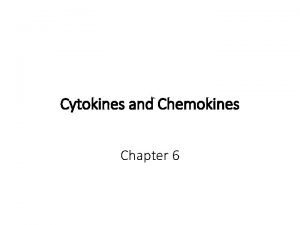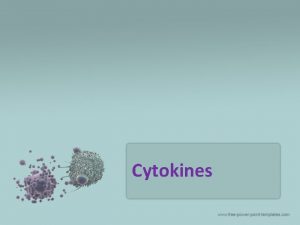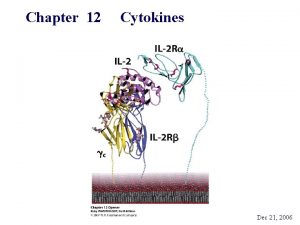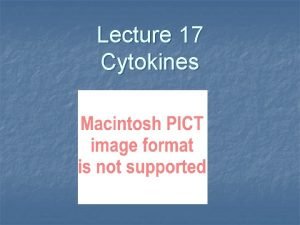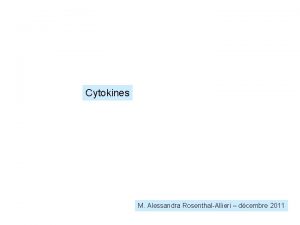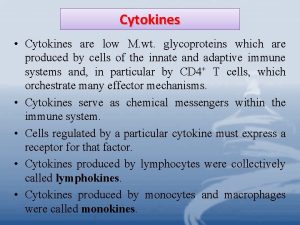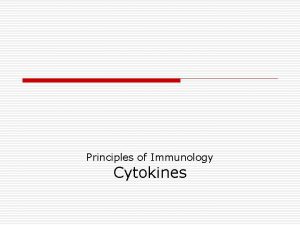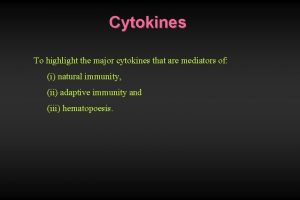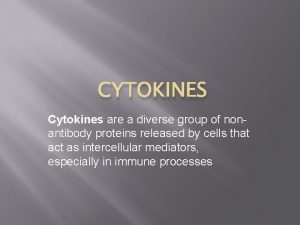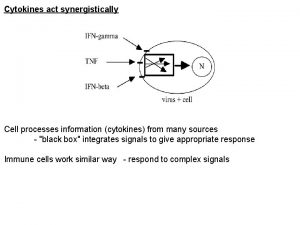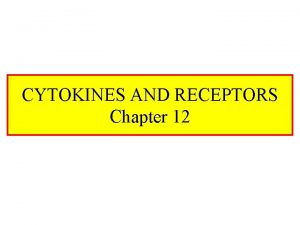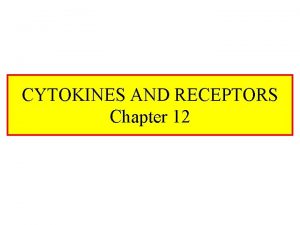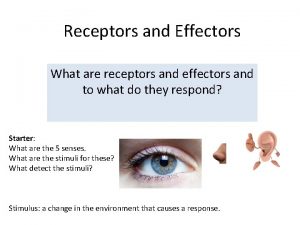CYTOKINES AND RECEPTORS DR SANJITA DAS What Is



























- Slides: 27

CYTOKINES AND RECEPTORS DR SANJITA DAS

What Is A Cytokine? • • Low molecular weight proteins (30 KDa) Bind receptors, alter gene expression Can bind the secreting cell (autocrine) Can bind another cell close by (paracrine) Few cases bind another cell far away (endocrine) Very low Kd receptors (10 -10 -10 -12 M) Cytokines regulate immune responses

Cytokines • Cytokines can activate many cells • Ex. Cytokines secreted by TH can affect Bcells, CTLs, M , NK • A cytokine can be pleiotropic (different effect on different cells) • Synergism, redundancy, antagonism • Interleukins, monokines, lymphokines, chemokines, term CYTOKINE includes all of them

Innate and adaptive Immunity


Cytokine actions may be local and systemic Autocrine action act on cytokine-producing cell itself Paracrine action act on a nearby cell circulation Endocrine action act at a distance from the site of infection

Cytokine Categories • 4 Categories – – TNF family Chemokine family Interferon family Hematopoietin family • Hematopoietin family – – -helical structure prevalence Little or no -sheet Ex. IL-2 and IL-4 Amino acid sequences vary considerably


Cells That Make Cytokines And Their Function • A Variety Of Cells Are Capable Of Making Cytokines • However The Biggest Producers: M and TH • Cytokines Are Involved In – – Hematopoiesis Adaptive Immunity Innate Immunity Inflammation • See Appendix For Complete List And Function • Activities Established Thru Recombinant Cytokines (Simplistic Approach), In Vivo Function Can Vary

Cytokines Are Non-Specific • How Does Immune Specificity Fit With Non. Specific Cytokines • Answer 1: Thru Receptors – Receptors Expressed On Antigen Activated Cells • Answer 2: Close Proximity To Cytokine Secreting Cells. – Ex. APC-TH – Cytokine Concentrations (TH) Are High Locally – Only Interacting APC Gets Activated • Answer 3: Short Half Life – Short ½ Life Ensures Local Activity


Cytokine Receptors • 5 Major Families – Immunoglobulin Superfamily – Hematopoietin Receptor Family (Class I) – Interferon Receptor Family (Class II) – TNF Receptor Family – Chemokine Receptor Family • Class I and II (Majority Of Receptors) – Multimeric – Upon Receptor Engagement, Tyrosine Phosphorylation

Hematopoietin Receptor Family (Class I)

Receptor Signalling (IFN R) • Ligand Binds Subunit • Ligand Binding Causes Dimerization of Receptor • JAKs Get Activated – Phosphorylation of tyrosine residues on receptor – Phosphorylation of JAKs themselves • STATS Dock Receptor – Phosphorylation of STATs by JAKs • Dimerized STATs Translocate To Nucleus • Gene Expression



Cytokine Antagonists • Antagonists Exist In 2 Forms – Receptor Antagonists (Bind Receptor, No Activation) – Bind Cytokine (Prevent Cytokine From Binding Receptor) • Well Studied Example: IL 1 Ra • In Many Cases Antagonist Is A Soluble Receptor – Derived From Proteolytic Cleavage Of Extracellular Domain Of Particular Receptor – IL-2, IL-4, IFN • Viruses Produce Cytokine Mimics Or Cytokine Binding Proteins – Ex. Poxviruses Produce IL-1 -Binding Protein And TNF -binding-protein – These Agents Offer Viruses An Advantage


Microbes Antigen presentation Activation Macrophage Naïve CD 4+ T cell Dendritic cell CD 40 L IL-12 CD 8+ T cell NK cell T H 1 cell IFN- Macrophage activation; killing of phagocytosed microbes NK cell Increased cytolytic activity Killing of infected cell

Roles of cytokines in innate immunity and inflammation 0 1 3 Hours after LPS injection 6

TH 1 vs TH 2 • CD 4+ TH Cells Secret A Variety Of Cytokines • Evidence For 2 Subsets – T H 1 – T H 2 • Distinction Is Based On Cytokine Secretion • Cytokine Environment Determines Which Subset Will Develop – IFN for TH 1 (IL-12 and IL-18 from M , DCs) – IL-4 for TH 2



Transcription Factors TH 1 And TH 2 • • • T-bet Expression Results In TH 1 T-bet Suppresses TH 2 GATA-3 Results In TH 2 GATA-3 Suppresses TH 1 IFN- Regulates Expression of T-bet (Stat 1) IL-4 Regulates Expression of GATA-3 (Stat 6)


Active recruitment of the cells to the sites of infection recognition of microbes phagocytosis destruction

TNF Low quantities (plasma conc. <10 -9 M) Local inflammation Leukocyte Moderate quantities Systemic effects Fever High quantities (plasma conc. 10 -7 M) Septic shock Low output Activation Adhesion molecule Thrombus IL-1, chemokines Endothelial cell Hypoglycemia
 Mechanism of local anesthesia
Mechanism of local anesthesia Examples of cytokines
Examples of cytokines Adrenergic vs cholinergic
Adrenergic vs cholinergic Ganglion meaning
Ganglion meaning Difference between ionotropic and metabotropic receptors
Difference between ionotropic and metabotropic receptors Muscarinic vs adrenergic receptors
Muscarinic vs adrenergic receptors Muscarinic vs nicotinic effects
Muscarinic vs nicotinic effects Das alte ist vergangen das neue angefangen
Das alte ist vergangen das neue angefangen Mas e a vida e a vida o que é diga lá meu irmão
Mas e a vida e a vida o que é diga lá meu irmão Das alles ist deutschland das alles sind wir
Das alles ist deutschland das alles sind wir Jesus sagt ich bin das licht der welt
Jesus sagt ich bin das licht der welt Reflexões do poeta canto v
Reflexões do poeta canto v Tuberous receptors
Tuberous receptors Olfactory receptor cells
Olfactory receptor cells Receptor types
Receptor types Umami taste receptors on tongue
Umami taste receptors on tongue Proprioception vs mechanoreceptor
Proprioception vs mechanoreceptor Classification of sensory receptors
Classification of sensory receptors Sensory receptors in eye
Sensory receptors in eye Meissner's corpuscle function
Meissner's corpuscle function Exteroceptors examples
Exteroceptors examples 3 types of lung receptors
3 types of lung receptors Head paradoxical reflex
Head paradoxical reflex Derine
Derine Gary weinstein md
Gary weinstein md Mechanism of drug action
Mechanism of drug action Inverse agonist examples
Inverse agonist examples T3 receptor
T3 receptor

